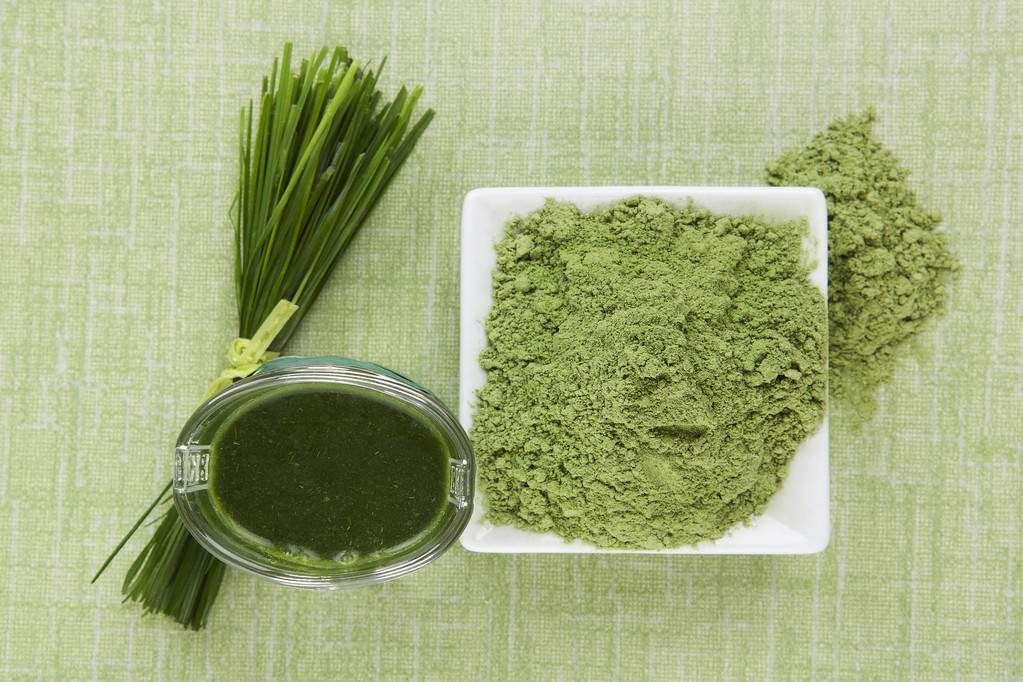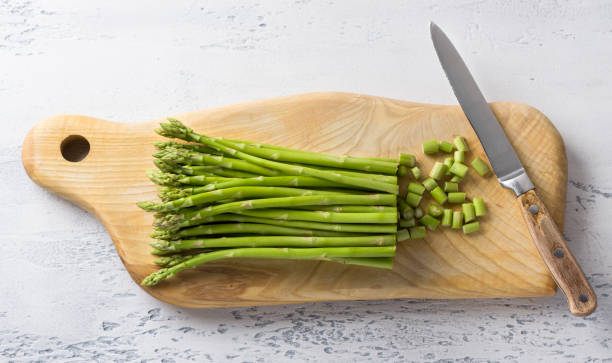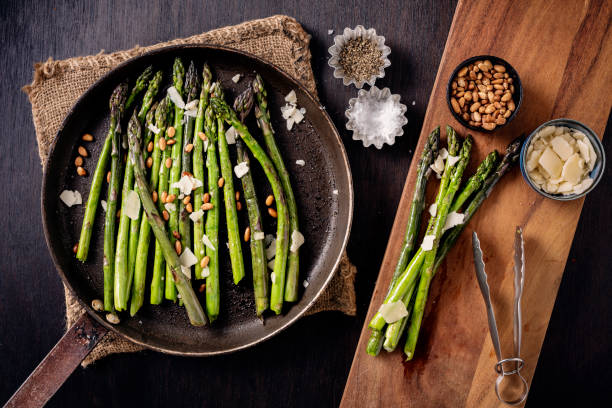Barley grass and wheat grass: Now the germs of the two types of grain are also supposed to be superfoods. The trend is once again coming from America, where Hollywood stars and top athletes want to improve their diet with smoothies made from the green powder.
The sprouts serve a lot of clichés: They are green, they are fresh, and as young seedlings they are particularly rich in nutrients. And they contain many plant growth factors that have a rejuvenating effect on cells. This raises great expectations: for example, barley grass is said to cure cancer, make muscles grow, alleviate gastrointestinal diseases and lower blood sugar and cholesterol levels. Wheatgrass, on the other hand, detoxifies, weakens the harmful effects of radioactive radiation, helps against diabetes and infections of all kinds. In addition, both types of sprouts are naturally perfect sources of nutrients.
So much for the full-bodied promises of grass fans. In this case, cows should be bursting with health on the pasture. And indoor cats should never get sick. Isn’t that right? That’s exactly why we researched the facts behind the grass hype to find out what the promise of salvation really is.

What exactly are barley grass and wheat grass?
Although barley grass and wheatgrass are marketed as new, great superfoods, they are well-known plants. In spring, the superfoods can even be found by the millions on the fields in Germany. Because barley grass is the young shoots of barley that emerge shortly after germination. In fact, it is the barley that is normally sold as grain in our country. Cat owners may also know barley grass in another context: from the small bowls that are sold as “cat grass”. Again, these are just barley sprouts in a nutrient concentrate.
The same applies to wheatgrass, except that the young shoots are only harvested after about three weeks. This is when the nutrient content of wheatgrass is said to be at its highest. The plant then uses this for its own growth and for the formation of stalks and seeds.
Wheatgrass or barley grass juice: ingredients and nutritional values
Like all real cereals, wheatgrass and barley grass belong to the grass family. As mature grains, barley and wheat therefore contain gluten. Since the grass variants are harvested as somewhat older seedlings, especially in industrial production, they have not yet developed ears. Barley grass and wheat grass are therefore gluten-free, but contain a lot of carbohydrates – when fresh, therefore, around 300 kcal per 100 grams. The high energy density also explains the main purpose of barley grass: as fattening feed for cattle.
However, fresh barley grass also contains many minerals and vitamins, for example 3.4 mg zinc, 37 mg iron, 179 mg magnesium or 832 mg calcium. Wheatgrass scores with its high iron, magnesium, zinc and selenium content. In addition, the wheat sprouts contain a lot of vitamins A, C, E and K. The roughage, which is present in large quantities in the raw green shoots, no longer plays a role in the juice from wheatgrass or barley grass due to the pressing. Incidentally, these are also largely lost in the powder. However, the chlorophyll, the green plant pigment, which is said to play a role in cell protection, is retained.
Buy wheatgrass and barley grass powder
Wheatgrass and barley grass are rarely available fresh or as juice. This is due to the composition of the sweet grasses, which, like all grasses, spoil quickly once they are cut. However, since humans cannot consume wheatgrass hay or barley grass silage like cows can, the sprouts are (freeze) dried and processed into powder. The ingredients of barley grass and wheat grass are significantly reduced by the drying process, although it is very gentle.
You can then either buy pure barley grass and wheat grass powder, pressed into tablets or as capsules. But be careful: Since both grasses grow on normal fields, the pollution can be high even with supposedly organic products. Caution is advised, especially with products from the Internet, which often come from Asia.
So you can grow wheatgrass or barley grass yourself
On the other hand, it is safe to grow barley grass or wheatgrass on the windowsill at home without any harmful substances. Bowls or flower pots with soil or nutrient granules serve as a “field”. As seeds for barley grass and wheat grass you simply take normal, untreated and whole wheat or barley grains. These are available either in the health food store or, for example, in the country trade. But always ask for organic grain there, which is less polluted and healthier.
Then simply sprinkle a handful of grains on your bed, cover with a thin layer of soil or granules and moisten. At room temperature and moderately moist soil, wheat and barley germinate after a few days. You can harvest the shoots after about ten days to three weeks.
Barley grass: effects and side effects
Barley grass is said to have an almost unbelievable effect. The ingredients of barley grass are mostly antioxidants and plant growth factors. On the one hand, these should render the aggressive free radicals harmless and at the same time stimulate healthy cell renewal. The barley grass is said to support the body in dealing with radioactive radiation, fight cancer, heal gastrointestinal diseases and also have a positive effect on muscle building and mood.
In addition, fans of green sprouts say they lower cholesterol levels, boost the immune system due to their high nutrient density and speed up recovery from illness. Only fresh barley grass has side effects, as the long plant fibers are difficult for humans to digest. Therefore, the consumption of larger amounts is not advisable.
What is the effect of wheatgrass?
Wheatgrass is also full of antioxidants and rich in nutrients. Similar to barley sprouts, the effect of wheatgrass is based on these ingredients. A 2015 meta-study summarized the possible effects of wheatgrass. The green shoots are said to help fight tumor cells and help you lose weight by boosting your metabolism.
Clinical trials on humans show a possible support of chemotherapies and maybe also reduce their side effects. And stomach ulcers, rheumatoid arthritis or diabetes can also be treated with it. The same applies to wheatgrass: Only the fresh plants have side effects due to the high content of plant fibers. No problems were observed with wheatgrass powder or juice.
What do the powder products bring?
Granted, it sounds tempting. A bit of wheatgrass powder mixed with water and drunk daily and cancer, diabetes, obesity or stomach problems are history. Or maybe a little barley grass powder in the green smoothie and the flu season won’t bother me anymore.
It would be too good to be true. After all, both barley grass and wheatgrass only have one “effect”: they fill the coffers of the manufacturers. Nothing has been scientifically proven. The healing promises of barley grass are usually only based on experience or experiments in the test tube. There is only one small study on the effect on cholesterol levels, which, however, could not find any effect. The same applies to wheatgrass. The meta-study already mentioned says that although effects were observed, the studies were only carried out with small samples, were not methodologically flawless or were carried out on animals.
What remains is the high nutrient density of barley grass and wheat grass. Basically positive, but if you put the values in relation to the daily consumed amount as powder, capsules or tablets, this effect is also lost again. The bottom line is that there is no advantage left by the two green sprouts.

Conclusion: How useful are barley grass and wheat grass really?
Barley grass and wheat grass are green. They also grow at home on the windowsill. The nutrient density is relatively high. And they are marketed as superfoods. But that was it in terms of advantages. What is not mentioned is the risk of ingesting harmful substances such as mineral oils, pesticides or environmental toxins with wheatgrass juice or barley grass powder. Or that the dietary fibers in the stalks are hardly digestible for humans, but are absent in juice and powder anyway.
It is also often swept under the rug that when processed into barley grass or wheatgrass powder, many of the nutrients are lost and the daily amount consumed is only small. As is the fact that none of the claimed medicinal effects have been scientifically proven. So overall, the green grasses are nice but useless, they don’t even taste good. It is much better to switch to other green vegetables.
Broccoli, kale, spinach or chard also contain a lot of chlorophyll, vitamins and minerals. These types of vegetables can be bought regionally, seasonally and, of course, organically, and they are certainly tastier than barley grass or wheat grass.







